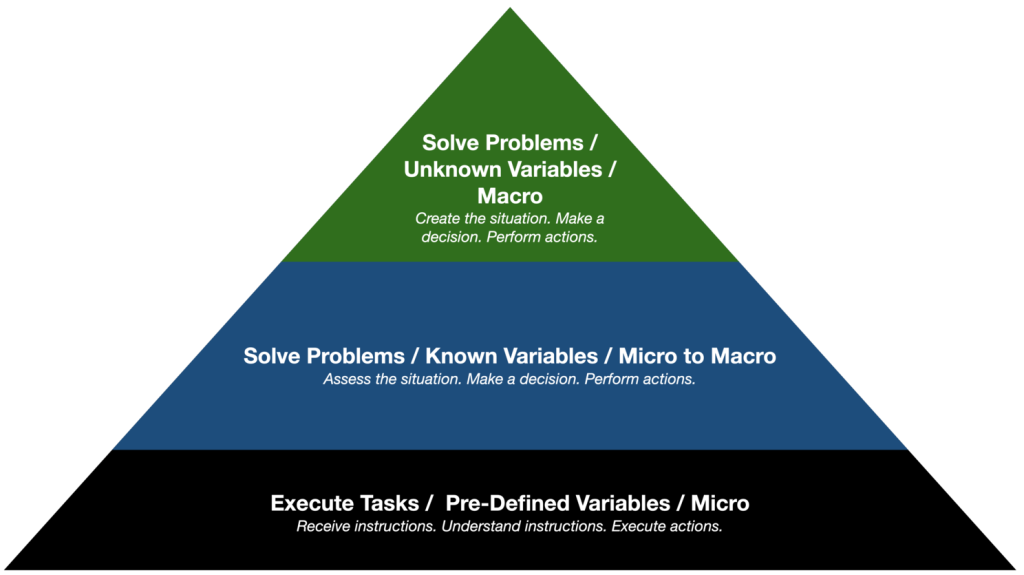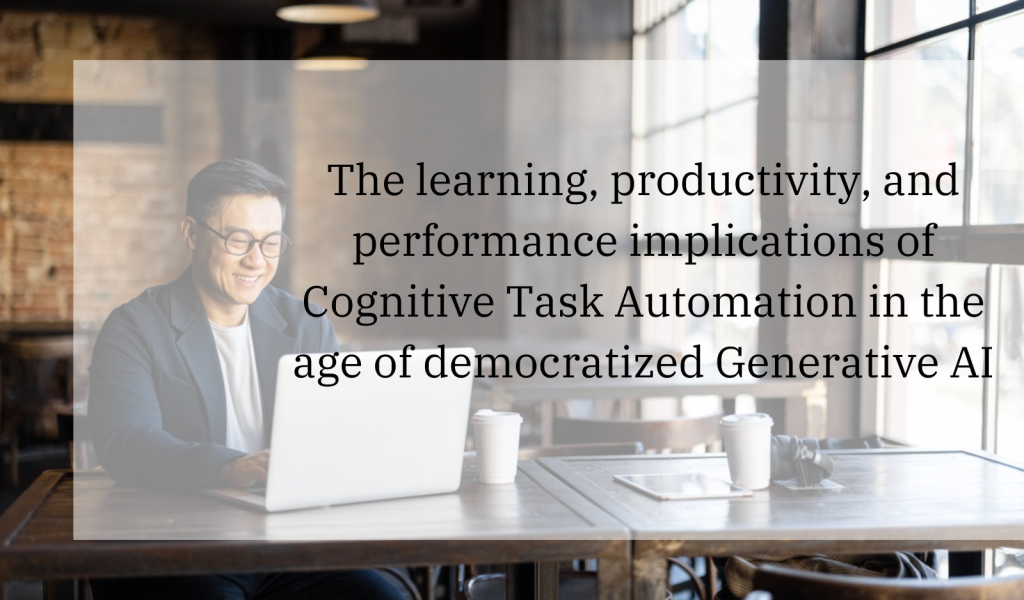Artificial Intelligence (AI), once a concept primarily found in science fiction, has rapidly become an integral part of our everyday lives. The rise of AI in recent years is an outcome of advances in computational power, the availability of massive amounts of data, and breakthroughs in machine learning algorithms. AI can now be found in everything from our personal devices like smartphones to complex systems in sectors such as healthcare, finance, transportation, and more.
AI technologies, such as machine learning, natural language processing, and computer vision, have not only automated mundane tasks but have also begun to carry out complex tasks that require learning from data, understanding natural language, recognizing patterns, and making decisions.
The advent of Generative AI in recent months has been a particularly exciting development. This technology uses machine learning models to generate new, previously unseen content, ranging from text to images, music, and complex designs. This can include everything from creating realistic human-like text to designing new drug molecules or creating art or music.
-
The democratization of Generative AI is a recent trend that makes these advanced AI capabilities accessible to a broader range of people, including those without specialized technical expertise. Thanks to user-friendly AI platforms, open-source libraries, and cloud-based AI services, even non-experts can now leverage the power of Generative AI. This has the potential to profoundly impact various fields, enabling individuals and organizations to generate creative solutions, improve decision-making processes, and develop new products or services at a scale that was previously unimaginable.

Author
Dehumo Bickersteth
Managing Partner momenta Group
For custom tailored leadership training
Job Automation — From Robotic Process Automation (RPA) to Cognitive Automation and then to Cognitive Task Automation (CTA).
The journey of job automation has seen a profound evolution from simple rule-based tasks to complex cognitive processes, transforming the landscape of work.
Initially, Robotic Process Automation (RPA) heralded a new era in job automation. RPA is essentially software robots or “bots” programmed to perform repetitive, rule-based tasks traditionally done by humans. These tasks could include data entry, processing transactions, or generating reports. By taking over such mundane tasks, RPA improved efficiency and accuracy, freeing human workers to focus on more complex and strategic tasks. However, RPA’s capability was limited to defined, structured tasks and lacked the ability to handle tasks that required understanding or decision-making.
The next leap in job automation was Cognitive Automation. This integrated Artificial Intelligence (AI) technologies such as natural language processing, machine learning, and speech recognition with automation. Cognitive Automation goes beyond rule-based tasks and can handle unstructured data, understand and interpret natural language, and even make decisions based on complex rules. This allowed automation to penetrate deeper into job roles that involved complex processes and decision-making, traditionally thought to be exclusive to human cognition.
Cognitive Task Automation (CTA) is a more specialized form of Cognitive Automation. CTA specifically refers to automating tasks that require cognitive abilities like understanding context, making judgments, or learning from experience. With CTA, even tasks that involve comprehension, problem-solving, or interaction can be automated. It signifies a new frontier where automation is encroaching upon areas that were until recently considered the unique domain of human intelligence.

Each stage of this evolution — from RPA to Cognitive Automation and then to CTA — represents a significant expansion in the types of jobs that can be automated. It also highlights the evolving nature of work and the skills valued in the workplace, with implications for workers, organizations, and society.
A look at the potential human implications of CTA
Cognitive Task Automation (CTA) is poised to bring about substantial changes in the way humans work and interact with technology. Here are some potential work and learning implications.
Workplace implications
- Redistribution of Workload: CTA has the potential to take over tasks that require cognitive abilities, such as analyzing complex data, understanding and responding to natural language, or making judgments based on a set of complex rules. This means that workers could be freed up from certain routine or complex tasks to focus more on strategic, creative, and interpersonal aspects of their jobs. For example, in a customer service environment, CTA could handle the majority of common queries, leaving more complex, unique, or sensitive cases for human agents.
- Job Satisfaction and Employee Wellbeing: CTA could enhance job satisfaction by relieving workers from mundane and repetitive tasks. By focusing more on challenging and engaging aspects of work, employees could experience higher job satisfaction and improved well-being. For example, a physician who uses CTA could spend less time on paperwork and more time interacting with patients.
- Employment Structure Changes: As CTA becomes more prevalent, we might see changes in employment structures. There could be fewer roles focused on routine cognitive tasks and more roles centered around managing, implementing, and optimizing CTA systems. This might lead to job displacement in certain areas but also the creation of new roles in others. For instance, there might be fewer traditional bookkeeping roles but increased demand for professionals who can implement and oversee automated financial systems.
- Accessibility and Inclusion: CTA could also help make certain jobs more accessible to people who were previously unable to perform them due to physical limitations. For instance, someone with mobility issues could oversee and manage a CTA system that performs tasks requiring physical labor.
- Reskilling and Upskilling: With CTA taking on more complex tasks, there’s likely to be a shift in the skills in demand. Employees may need to focus more on skills complementing CTA, such as creative problem-solving, empathy, and strategic decision-making. For instance, data analysts might spend less time gathering and cleaning data — tasks that can be automated — and more time interpreting the data and making strategic recommendations.
Looking specifically at reskilling and upskilling
As tasks traditionally considered part of a ‘human domain’ become automated, individuals and organizations are compelled to revisit their learning and development strategies to remain relevant and competitive.
CTA takes over tasks that require cognitive skills, such as problem-solving, decision-making, or learning from past experiences. As a result, the focus shifts towards developing ‘AI-ready’ skills that emphasize creativity, critical thinking, emotional intelligence, and the ability to work effectively with AI.
- With CTA, the need for continuous learning and upskilling becomes more pronounced. For instance, data analysts who previously spent time collating and cleaning data might find these tasks automated. Consequently, they’ll need to spend more time learning advanced data interpretation, decision-making, and strategic skills.
- Further, there’s an increased need for ‘AI literacy.’ Regardless of one’s job role, understanding the basics of AI, its potential uses, and ethical considerations is becoming crucial. This literacy extends beyond technical skills, requiring an understanding of how AI fits into a broader societal and ethical context.
- Moreover, as the AI field rapidly evolves, staying updated on the latest developments becomes essential. Lifelong learning and adaptability become vital skills, as the technology that might be relevant today could become obsolete tomorrow.
These are just a few examples of the potential human implications of CTA. As with any technological advancement, the ultimate impact will depend on how it’s implemented and managed.
Businesses, policymakers, and society as a whole these changes in a way that maximizes the benefits and minimizes potential harm.
In Conclusion…
As we embrace new and increasing possibilities of Cognitive Task Automation (CTA), we are not merely spectators but active participants in shaping the future of work. It is incumbent upon us all — employees, educators, policymakers, and businesses — to prepare for this impending revolution.
Rather than viewing CTA as a threat, we should see it as an opportunity — an opportunity to augment our skills, rid ourselves of mundane tasks, and focus on areas where we truly excel.
For individuals, it is time to prioritize continuous learning and upskilling. Embrace the shift and begin focusing on skills that complement AI — creativity, critical thinking, emotional intelligence, and strategic decision-making.
For businesses, it’s a call to invest in your most valuable asset — your people. Empower them with the tools and knowledge to navigate this changing landscape. Implement learning and development programs focused on AI readiness and foster a culture of lifelong learning.
For educators and policymakers, the challenge is to redesign curricula and policies that ensure everyone has the opportunity to participate in and benefit from this new era of work.
The democratization of Generative AI and the rise of CTA signals a new chapter in our relationship with technology. Let’s embrace this change with open minds and a commitment to learning. The future of work isn’t something that happens to us — it’s something we can actively shape, and that journey begins now. So let’s roll up our sleeves, equip ourselves with the right skills, and march towards a future where AI and human intelligence work hand in hand.



